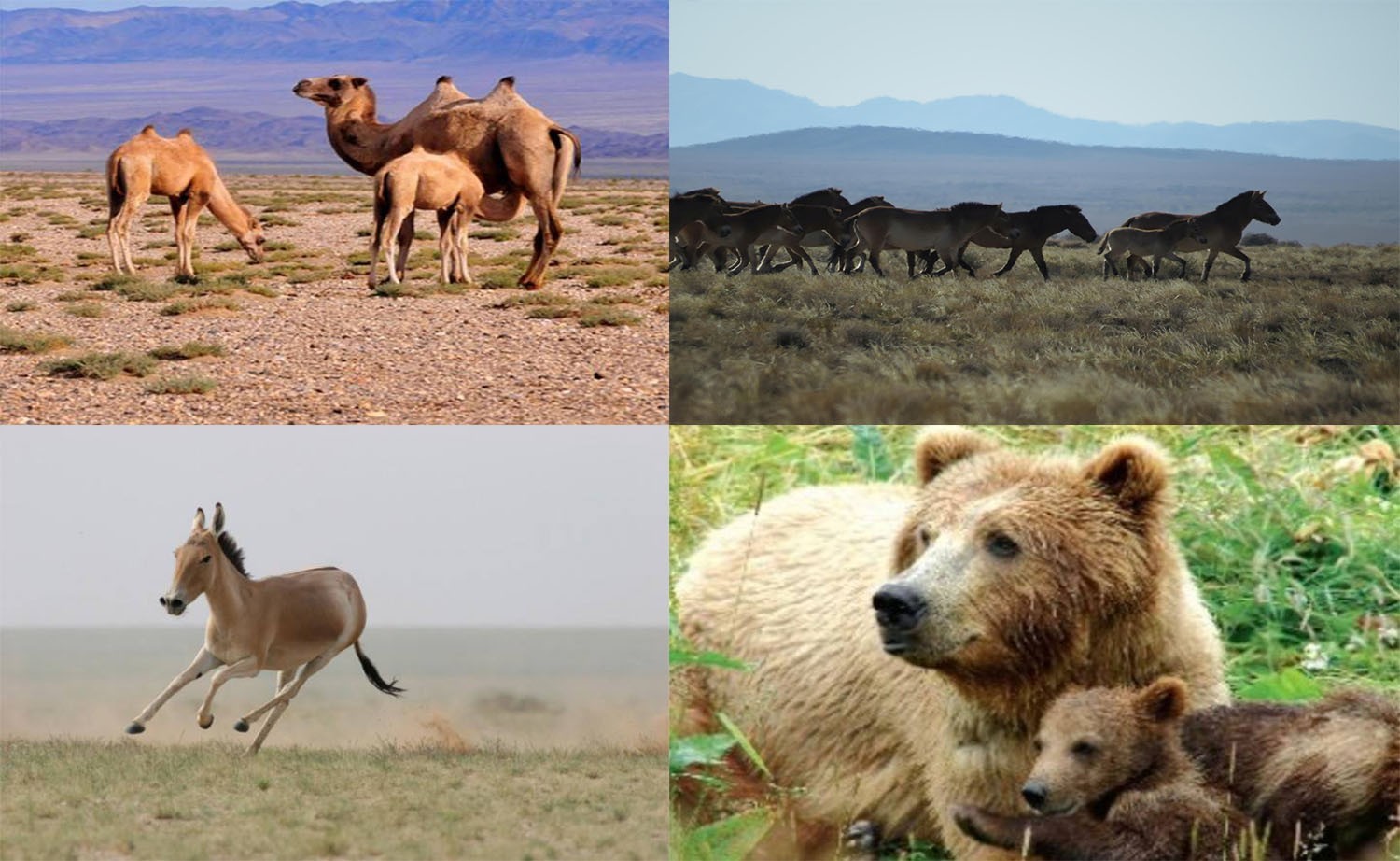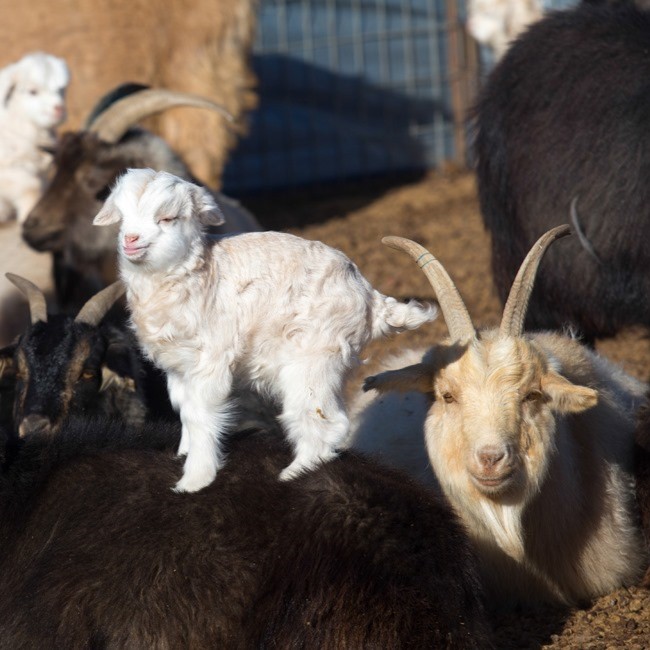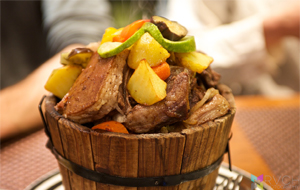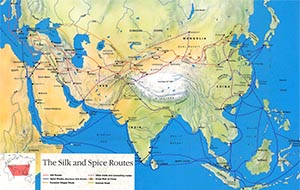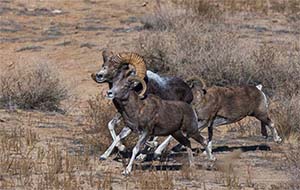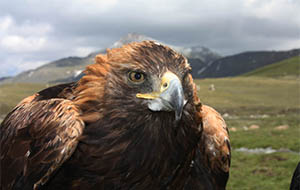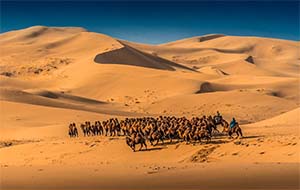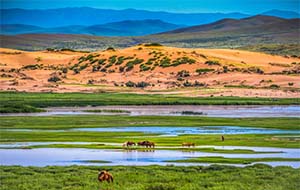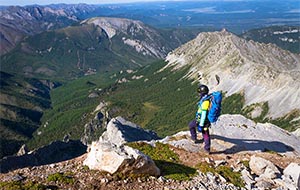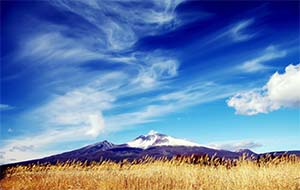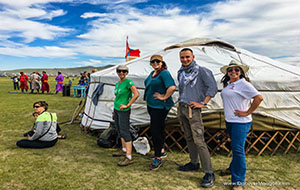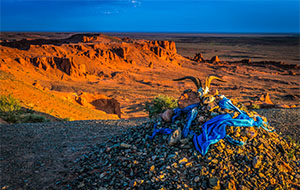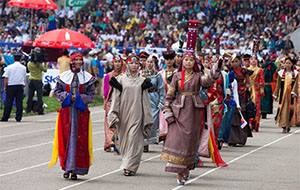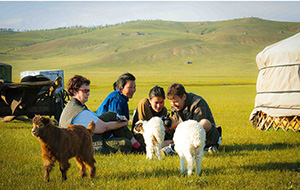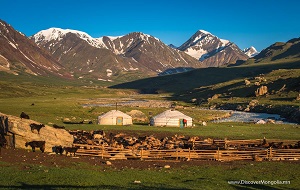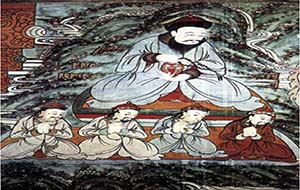The six signature species of the Mongolian Gobi are Wild Bactrian Camel, Takhi (Wild Horse), Khulan (Wild Ass), Goitered Gazelle, Saiga Antelope, and Mazaalai (Gobi Bear). Amongst these species, the most concerning one is the Gobi Bear as the population amounts to a marginal 20. Statistically speaking, it is close to impossible to bring their population back up, and will most likely go extinct. Nevertheless, this is not a reason to neglect these creatures outright.

Saiga Antelope
One of the main reasons the Great Gobi Six initiative was implemented is because these species are an integral part of the Mongolian Gobi ecosystem. For example, Saiga Antelopes help soil scuffling and their droppings act as fertilizer for the Gobi flora. On the other hand, Wild Ass digs out holes in the hard soil with their strong hooves to create a water source for many animals in the Gobi desert. Without the contribution of these animals, the ecosystem of the Mongolian Gobi desert will be severely impacted and many other species will show a decline in their population.

Wild Bactrian Camel
In particular, the Gobi Bear, Wild Bactrian Camel, and Saiga Antelope have been cited as critically endangered mainly due to poaching, climate change, and human intervention. These species are hunted for their meat, skin, and horns. This is especially the case for the Saiga Antelope as their horns are used extensively for traditional eastern medicine. In addition, their skin is used to manufacture suede and box calf. Next on the list is the Wild Horse, which is listed as endangered, followed by the Goitered Gazelle, indicated as vulnerable. Finally, the Wild Ass is cited as near threatened by the IUCN Red List of Threatened Species.

Wild Horse
In regard to the declining population of the Great Gobi Six, it has much to do with humans disrupting their natural habitat and bringing about climate change and global warming. These factors heavily and negatively affect the delicate balance these species have been keeping for centuries. Along with the rising human population, the diet and habitat of the Mongolian Gobi mammals are being increasingly compressed with no end in sight.

Mazaalai (Gobi Bear)
Therefore, the Great Gobi Six project participated by various organizations, both domestic and foreign, have become a positive influence on bringing awareness and showing care towards the diminishing population of Gobi animals in Mongolia. With the consistent annual events hosted by different provinces in Mongolia, there will hopefully be tangible changes in the near future, even if the changes do not come by quickly.









